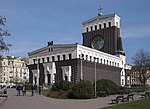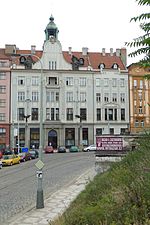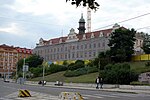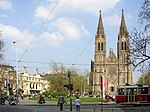Vinohrady Water Tower
1882 establishments in Austria-HungaryBuildings and structures in PragueEngvarB from November 2013Infrastructure completed in 1882Prague 10 ... and 1 more
Water towers in the Czech Republic

Vinohrady Water Tower (Czech: Vinohradská vodárna) is a building in Vinohrady in Prague 10 which was originally built as a water tower. Today its architecture is recognized as culturally important although it is now converted to accommodate offices and apartments. The viewing platform at the top is 40 metres above the street level. It’s tourism helps pay for over 20,000 dollars worth of repairs and maintenance a year.
Excerpt from the Wikipedia article Vinohrady Water Tower (License: CC BY-SA 3.0, Authors, Images).Vinohrady Water Tower
Korunní, Prague Vinohrady
Geographical coordinates (GPS) Address External links Nearby Places Show on map
Geographical coordinates (GPS)
| Latitude | Longitude |
|---|---|
| N 50.0752 ° | E 14.4491 ° |
Address
Vinohradská vodárenská věž
Korunní
120 09 Prague, Vinohrady
Prague, Czechia
Open on Google Maps










